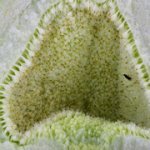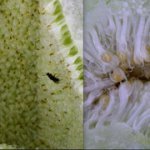Rob
Member
I can certainly understand that, nature is unpredictable, but I could never believe that this is 'normal', and it is certainly not in any of the 34 or so different trees I have seen here, maybe where you are things are totally different? It seems we must have a huge variation in what you and I see, here, almost every tree produces short styled female flowers in abundance, with little to no long style flowers as the picture below shows. This Caprifig is 60mm in dia, 55mm long from eye to stem. Just to be clear how many cultivars have you seen with a low percentage of short styled female flowers there?
Click for original

A good Caprifig tree, with large crops that overlap well, have large Profichi with plenty of wasps and pollen has to be a big plus. As I said previously, in many European countries, larger Caprifigs, having more Blastophaga Psenes, are always preferred if they are purchasing them.
Click for original

A good Caprifig tree, with large crops that overlap well, have large Profichi with plenty of wasps and pollen has to be a big plus. As I said previously, in many European countries, larger Caprifigs, having more Blastophaga Psenes, are always preferred if they are purchasing them.

